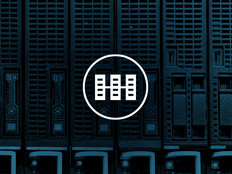Growing Business? Think Energy Efficiency for IT
Every growing business has an ever-increasing appetite for energy. Expanding floor plans require increased heating, cooling and lighting — as well as increased spending on these necessities. A growing small business must power and manage increasing numbers of back-office servers and an expanding network infrastructure, as well as new PCs and office equipment, and sometimes even a data center. All of these costs add up, and can leave your business with a hefty bill that eats into profits and produces an expanded carbon footprint.
To address these concerns, a growing firm should include an energy strategy in any business expansion plan. Small businesses that address energy consumption now, when deploying new IT and facility infrastructure, will produce returns on investment for years to come.
In the Office
Small businesses should carefully consider energy consumption when assessing new or updated workspaces. Improved building insulation can sharply reduce heating and air conditioning loads, while efficient lighting yields cost savings every working day. For example, a 60-watt equivalent LED bulb consumes just 9 to 12 watts and produces minimal waste heat (about 3.4 BTUs), while lasting up to 25,000 hours. By comparison, an incandescent bulb consumes 60 watts and outputs 85 BTUs, while lasting 1,000 to 2,000 hours.
Intelligent building systems can pay off as well. Programmable thermostats reduce heating and cooling demands when an office is empty, while motion-based sensors turn off lights in unused areas. At user workstations, newer PCs with energy-efficient, solid-state disk (SSD) drives boot up in seconds, reducing the inconvenience of having client PCs shut down after a set period of inactivity.
In server rooms, virtualization can consolidate workloads onto fewer, more powerful and more efficient machines. IT leaders also should take stock of their software portfolios to determine which applications and workloads can be retired or consolidated. Some firms have dedicated servers running 24/7 to power forgotten software that nobody uses.
Across the Network
To further enhance energy savings, many small businesses deploy stackable or rack-mounted switches, firewalls and other modular network gear to optimize thermal management and use shared power supplies. Devices that offer Power over Ethernet send up to 60 watts of power over network cables, reducing the need for dedicated electrical runs and providing a more efficient way to power access points, Voice over IP phones and other network-attached devices.
Advanced network management solutions also drive down energy use. Platforms such as Cisco EnergyWise can measure consumption and provide policy-based control over network systems. Firms can reduce loads by shutting down wireless access points at night and on weekends, for example, and by turning off Ethernet ports on network switches at scheduled times.
Updated Wi-Fi technology can also boost efficiency. Access points that deploy the 802.11ac Wi-Fi standard serve more devices, reducing the number of access points needed to provide bandwidth to a given area. The 802.11ac protocol also streamlines data handling, reducing client processor overhead — and power draw — on Wi-Fi-connected 802.11ac devices.
At the Data Center
Small firms should pay special attention to data center operations, where decisions on building layout, cooling solutions and rack-mounted computing infrastructure are paramount. Modern servers with scalable processor core architectures can do more work in less space, while stepping down power consumption when not running full tilt.
The gains in data storage can be transformative. Ultra-efficient, SSD arrays consume one-tenth of the power of traditional spinning-media arrays, and require just one-eighth of the floor space. A move to SSD storage can win back scarce data center space and sharply reduce the load on overtaxed cooling systems.
Ultimately, a firm’s best choice may be to move some or all of its data center workloads to the cloud. Commercial cloud providers possess highly optimized environments that maximize energy efficiency. For businesses that have exhausted all available data center and power resources, outsourcing this activity may be the best option.
For more on the technology upgrades small businesses should make when growing and expanding, check out, "Why Expanding Small Businesses Should Focus on IT Infrastructure Upgrades."









